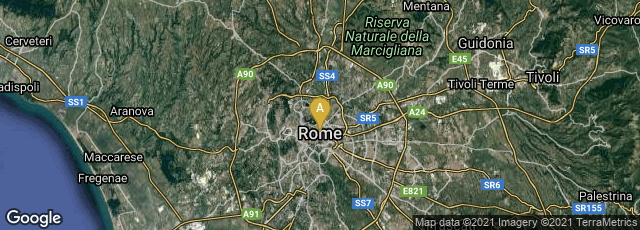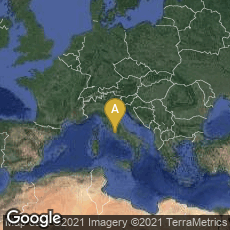

The Corpus agrimensorum romanorum, a Roman treatise on land surveying, the earliest text of which is preserved in the 5th or 6th century codex known as Herzog August Bibliothek, Cod. Guelff. 36.23 Augusteus 2, is one of the few surviving illustrated, non-literary or non-religious texts from late antiquity. The manuscript text is written in an uncial script, with red letters indicating the beginnings of paragraphs. The codex is preserved in the Herzog August Bibliothek, Wolfenbüttel.
♦ In 1554 the Corpus agrimensorum romanorum was first published in print by Pierre Galland and scholar printer Adrien Turnèbe in Paris as De agrorum conditionibus, & constitutionibus limitum, Siculi Flacci lib. I . Iulii Frontini lib. I. Aggeni Urbici lib. II. Hygeni Gromatici lib. II. Variorum auctorum ordines finitionum. De jugeribus metiundis. Finium regundorum. Lex mamilia. Coloniarum pop. Romani descriptio. Terminorum inscriptiones & formae. De generibus lineamentorum. De mensuris & ponderibus. Omnia figuris illustrata. Parisiis, M. D. LIIII. Apud Adr. Turnebum typoraphum regium.
Galland and Turnèbe worked
"from a manuscript found in the monastery of St. Bertin at St. Omer during a ‘humanist tour’ of Northern France and Flanders undertaken around 1545, the time that Turnèbe was teaching at the University of Toulouse. In the preface Galland says that they visited each monastery in turn and ‘carefully collected old manuscripts like keen-scented dogs’ (quoted by Lewis, p. 38). The illustrations are of ‘boundary stones, properties, cities, roads, rivers, and swamps, as well as diagrams of the cosmos. The areas to be surveyed are shown in plan from a bird’s-eye view, so that their dimensions can be reproduced accurately.
"Mountains, cities, buildings, and boundary stones, by contrast, are shown receding into space according to the technique that Vitruvius called 'scene drawing' (scaenographia). This scaenographia is not the one-point perspective of the fifteenth and sixteenth centuries but rather the Roman technique of varying viewpoints’ (Rowland p. 135). The fact that the Agrimensores manuscripts are illustrated is in marked contrast to the surviving manuscript sources for Vitruvius, none of which retain the illustrations mentioned in the text" (Roger Gaskell, Catalogue 47 [2012] No. 22, with illustrations).
Rowland, The Culture of the High Renaissance (1998). Lewis, Adrien Turnèbe (1512–1565): A Humanist Observed 1998).